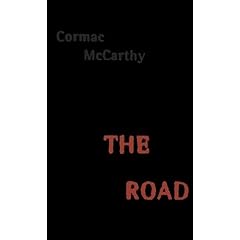Get yer story straight
Monday, October 16th, 2006 Didn’t realize I had so much in common with Funky Winkerbean. I can relate to this origin story, from the 10/15 Sunday strip: “After (reading that first comic book)… the world was never the same!”
Didn’t realize I had so much in common with Funky Winkerbean. I can relate to this origin story, from the 10/15 Sunday strip: “After (reading that first comic book)… the world was never the same!”
Except certain things about the execution of this strip fill me with doubt. For one thing, the comic he’s rhapsodizing about doesn’t belong with the other comics it’s shown with.
The comic he’ll never forget — Action #242 — debuted in July of 1958 and introduced both Brainiac and the bottle city of Kandor. But shown alongside it is an issue of Archie’s Mad House — and that title didn’t debut until 1959. I know that sometimes comics distribution was spotty and slow, and perhaps the Action #242 hung around unbought, but how to explain the Captain Marvel #1, which debuted in 1968 — a full 10 years later?
 You’ll also note that the cover price of Captain Marvel #1 was 12¢. In 1968, comics went to 15¢ (making this one of the last 12¢ issues). When had they last been available for 10¢? Try 1962. The cash register in panel five shows a sale of 10¢, which is correct for Action #242, but again, it’s displayed alongside a comic from 10 years later that would have cost more.
You’ll also note that the cover price of Captain Marvel #1 was 12¢. In 1968, comics went to 15¢ (making this one of the last 12¢ issues). When had they last been available for 10¢? Try 1962. The cash register in panel five shows a sale of 10¢, which is correct for Action #242, but again, it’s displayed alongside a comic from 10 years later that would have cost more.
In the background of the same panel, one sees a poster for the community Halloween Party, meaning that this is set in October. The issue of Captain Marvel shown would have been distributed in August — so this particular issue would have been pulled and replaced twice in this timeframe.
So… what year is it supposed to be here? Or are we supposed to think that the drugstore (and its distributor) kept comics lingering on the same spinner rack for Ten Years?
Also, whether it’s the 50’s, or the 60’s, what era is this kid’s weird clothing ensemble from? One could charitably say late 60’s / early 70’s, in vogue with the then-counterculture, except in panel 3 it looks as though his jeans are either cuffed or rolled. (Rather than no cuffs, and flared.)
Along a similar line, note the druggist’s eyeglasses. They don’t look 50’s. Or 60’s. They appear to be from the 1970’s.
Why is any of this important?
Because all of the details are wrong, they make the entire story unbelievable. This mishmash of bad facts leads me to only two possible conclusions: The narrator is either a liar manipulating an unseen audience member, or he’s seriously brain-damaged. Ordinarily, I don’t follow Funky Winkerbean. But now I’m going to, just to see which theory is true.
The third potential scenario would take us outside the strip: that the cartoonist didn’t care enough to get it right.
 I didn’t flip over
I didn’t flip over 